
Info about the "Air to Air" Missiles...
AIM - 120 AMRAAM Slammer...
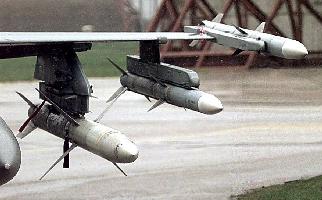
Background...
The AIM-120 advanced medium-range air-to-air missile (AMRAAM) is a new generation air-to-air missile. It has an
all-weather, beyond-visual-range capability and is scheduled to be operational beyond 2000. AMRAAM is a supersonic, air
launched, aerial intercept, guided missile employing active radar target tracking, proportional navigation guidance, and
active Radio Frequency (RF) target detection. It employs active, semi-active, and inertial navigational methods of guidance
to provide an autonomous launch and leave capability against single and multiple targets in all environments. The AMRAAM
weighs 340 pounds and uses an advanced solid-fuel rocket motor to achieve a speed of Mach 4 and a range in excess of 30
miles. In long-range engagements AMRAAM heads for the target using inertial guidance and receives updated target
information via data link from the launch aircraft. It transitions to a self-guiding terminal mode when the target is
within range of its own monopulse radar set.
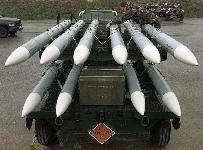
The AIM-120 also has a "home-on-jam" guidance mode to counter electronic jamming. With its sophisticated avionics, high
closing speed, and excellent end-game maneuverability, chances of escape from AMRAAM are minimal. Upon intercept an
active-radar proximity fuze detonates the 40-pound high-explosive warhead to destroy the target. At closer ranges AMRAAM
guides itself all the way using its own radar, freeing the launch aircraft to engage other targets. The AMRAAM is being
procured for the Air Force, US Navy and America's allies. The AMRAAM program improves the aerial combat capabilities of
U.S. and allied aircraft to meet current and future threat of enemy air-to-air weapons. AMRAAM is compatible with the Air
Force F-15, F-16 and developmental F-22; Navy F-14 D/D (R) and F/A-18 C/D; German F-4 and the British Sea Harrier aircraft.
A small number of AMRAAMs were carried by F-15 aircraft during Operation Desert Storm, though none were used.

The AIM-120 was redeployed to the Persian Gulf in 1992 for use on F-15 and F-16 fighters. In December 1992 an F-16 pilot
fired the first AMRAAM in actual combat, shooting down a MiG-25 Foxbat during a confrontation over southern Iraq. AMRAAM
is a follow-on to the AIM-7 Sparrow missile series. The missile is faster, smaller and lighter, and has improved
capabilities against low-altitude targets. It incorporates an active radar with an inertial reference unit and
micro-computer system, which makes the missile less dependent upon the fire-control system of the aircraft. Once
the missile closes on a target, its active radar guides it to intercept. This enables the pilot to aim and fire
several missiles simultaneously at multiple targets. The pilot may then perform evasive maneuvers while the missiles
guide themselves to their targets. The AIM-120 grew out of a joint agreement, no longer in effect, among the United
States and several NATO nations to develop air-to-air missiles and to share the production technology. The AMRAAM
program was established as a result of Joint Service Operational Requirement for an Advanced Air-to-Air Tactical Missile
needed in the post-1985 time frame. The AMRAAM program began with a 1975 study which recommended that future aerial
threats be engaged at 3-40 miles of range. The AMRAAM program completed its conceptual phase in February 1979 when
the U.S. Air Force selected two of five competing contractors, Hughes Aircraft Co. and Raytheon Co., to continue into
the validation phase. During the 33-month validation phase the contractors continued missile development by building
actual hardware to demonstrate their technological concepts.
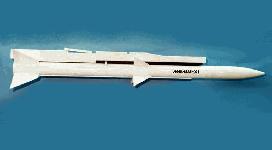
The program phase concluded in December 1981 after both contractors demonstrated that their flight-test missiles could
satisfy Air Force and Navy requirements. The Air Force competitively selected Hughes Aircraft Co.'s Missile System Group,
Canoga Park, Calif., as the full-scale developer. AMRAAM is managed as a joint Air Force and Navy program. The Air Force,
as executive service, established a Joint System Program Office (JSPO) at Air Force Material Command/Aeronautical Systems
Center, Eglin Air Force Base, Fort Walton Beach, Florida. The JSPO is headed by the Air Force Deputy for AMRAAM (Code
ASC/YA) and the Navy AMRAAM Program Manager, Air (PMA268). AMRAAM is currently in the Production, Fielding/Deployment
and Operational Support Phase of the Weapon System Acquisition Process. Air Force Initial Operating Capability (IOC) was
declared in September 1991. Navy IOC was completed in September 1993. During the full-scale development phase, Hughes
Aircraft Co. completed missile development and Raytheon was selected as a follower producer.

A production contract to both vendors was awarded in 1987. More than 200 of the test missiles were launched during flight
tests at Eglin AFB, Fla.; White Sands Missile Range, N.M.; and Point Mugu, Calif. Testing was accomplished in a combined
Developmental Test and Evaluation and Initial Operational Test and Evaluation program. Successful Navy operational testing
on the F/A-18C/D aircraft was conducted by Commander Operational Test and Evaluation Force during FY94 and included an
evaluation of the missile systemís effectiveness and suitability, maintainability, and supportability in the Navy
operational environment. The missile is operational on U.S. Air Force F-15 and F-16 aircraft. The Navy began receiving
AIM-120A deliveries in 1991, but delayed Fleet introduction until integration with the F/A-18 aircraft was completed in
1993. Fleet introduction coincided with F/A-18 IOC when CV/CVN load-outs began to include AIM-120A. AMRAAM is combat
tested, scoring two kills during Operation Southern Watch, and one kill in Bosnia. In April 1998 Air Force officials
announced the twelfth award to Raytheon Systems Company for the production of 813 additional Advanced Medium Range
Air-to-Air Missiles. The total contract value is $243 million. The Lot 12 purchase includes 173 missiles for the Air
Force, 120 for the Navy and an additional 520 for foreign customers.
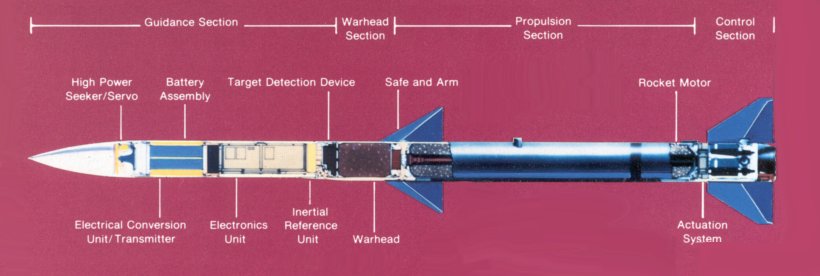
Historically, AMRAAM production awards were accomplished under a competitive, dual-source strategy with Hughes Missile
Systems Company, Tucson, Ariz., and Raytheon Electronic Systems, Bedford, Mass., as the prime contractors. When Raytheon
and Hughes Missile Company merged, forming the current Raytheon Systems Company, a single prime contractor, the government
implemented a new strategy called AMRAAM Vision 2000. With Vision 2000, the government shifted toward a more commercial
business arrangement with the contractor. Capitalizing on the efficiencies of a single prime contractor, the Air Force
and the Navy recognized savings in excess of $150 million, resulting from a drop in unit price from $340,000 in Lot 11
to $299,000 in Lot 12.
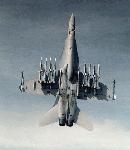
Variants...
Presently, there are three series of AMRAAM: AIM-120A, AIM-120B, and AIM-120C. AIM-120A. First production AIM-120A,
delivered by Hughes in 1988 to the 33d TFW at Eglin AFB, Florida. AIM-120B and AIM-120C versions are currently in
production, the latter with smaller control surfaces to permit increased internal carriage capability in the F-22.
AIM-120B deliveries began in FY 94, and AIM-120C deliveries began in FY 96.

P3I...
An improvement program seeks to develop AMRAAM capabilities, including software reprogrammability, advanced
counter-countermeasures, and options for improved propulsion. The AIM-120A is a non-reprogrammable missile
(requires a hardware change to upgrade the missile software). The AIM-120B/C is reprogrammable through the missile
umbilical using Common Field-level Memory Reprogramming Equipment (CFMRE). The AIM-120C has smaller aerosurfaces to
enable internal carriage on the Air Force F-22 aircraft. The USAF All-Up-Round (AUR) container houses an internal cable
which enables up to four missiles to be reprogrammed while in the container. USN containers are not equipped with the
cable and must be opened to reprogram the missile. All three AMRAAM variants are currently approved for use on the
F-15C/D/E, F-16C/D, and F/A-18C/D aircraft. Four wings, four fins (control surfaces), and the wiring harness cover
are mounted externally, providing additional distinguishing features from other similar missiles, such as AIM-7 Sparrow.
The AIM-120C utilizes "clipped" wings and fins in order to meet the internal carriage requirements of the F-22. AMRAAM
consists of the following major sections: Guidance, Armament, Propulsion, and Control. Other components include a wiring
harness, harness cover, Thermally Initiated Venting System (TIVS), and wing and fin assemblies. Guidance Section, Weapons
Guidance Unit.
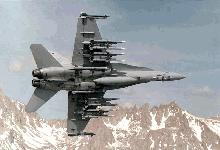
The Weapons Guidance Unit (WGU) consists of the radome, seeker, servo, transmitter-receiver, electronics unit, Inertial
Reference Unit, Target Detection Device (TDD), the harnesses, and frame structure. All units except the TDD are contained
within a sealed structure composed of the pyroceramic radome, titanium skin sections, and aluminum aft bulkhead. The TDD,
RF and video processor, and the antennas are attached to the aft skin section as a complete testable assembly. Electronics
group functions include radar signal processing, seeker servo control, and all of the computations performed in the central
data processor. The WGU-16B is used on AIM-120A missiles, the WGU-41/B is used on AIM-120B missiles, and the WGU-44/B is
used on AIM-120C missiles. Guidance sections on AIM-120B and AIM-120C missiles contain Electronic Erasable Programmable
Read Only Memory which allow reprogramming of the missile software. Missile software versions are denoted by Tape and
Revision Numbers, e.g., Tape 4 Revision 16.
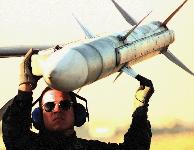
Armament Section - Weapons Detonation Unit...
The Weapons Detonation Unit (WDU)-33/B forms an integral part of the tactical missile airframe and includes the warhead,
the FZU-49/B (modified Mk 3 Mod 5) safe-arm fuze device, and the Mk 44 Mod 1 booster. The armament section also includes
the forward missile hook and hanger. The WDU-33/ B warhead meets the Insensitive Munitions (IM) program requirements.
Propulsion Section - Weapons Propulsion Unit...
The Weapons Propulsion Unit (WPU)-6/B consists of an airframe, integral rocket motor, a blast tube and exit cone, and an
Arm/Fire Device (AFD) with a visible safe-arm indicator. The high performance rocket motor utilizes a reduced smoke,
hydroxyl terminated, polybutadiene propellant in a boost sustain configuration, an asbestos-free insulated case (an
integral part of the airframe), and an integral aft closure, blast tube, and nozzle assembly with a removable exit cone
to facilitate control section installation/removal. Wings are attached in wing sockets at the forward end of the propulsion
section. Provisions are included within this section for mounting the filter rectifier assembly.
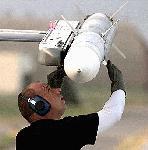
Control Section - Weapons Control Unit...
The Weapons Control Unit (WCU)-11/B consists of four independently controlled electro-mechanical servo actuators, four
lithium-aluminum batteries connected in parallel, and a steel fuselage section that is bolted to the propulsion section
aft skirt. Each actuator consists of a brushless DC motor ballscrew, an infinite resolution potentiometer directly coupled
to the output shaft, and pulse width modulated control electronics. The output shaft is engaged directly to a squib
actuated lock so that it does not interfere with the fin (control surface) installation and removal.
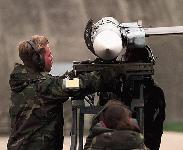
Wiring Harness - Harness Cover - Thermally Initiated Venting System...
The wiring harness cover extends from the aft end of the guidance section to the forward end of the control section.
Its primary purpose is to provide protection for the wiring harness. The main wiring harness electrically connects the
umbilical connector, guidance section, and control section. The wiring harness cover also houses the TIVS. The TIVS is
designed to vent rocket motor pressure in the event the missile is exposed to a fuel fire. The TIVS consists of an
external thermal cord which, when ignited, triggers an Out-Of-Line Device (OOLD) that ignites a Linear Shape Charge
that weakens the rocket motor, allowing the rocket motor to vent without exploding. The OOLD prevents the shaped charge
from detonating should the booster in the OOLD inadvertently detonate due to causes such as high impact. The unit has an
additional safety feature that causes it to "reset" within nine to thirteen units of gravity, such as the acceleration
experienced during missile launch. This feature prevents the system from functioning during missile free flight so that
the associated aerodynamic pressures do not inadvertently enable the TIVS and thereby degrade missile performance.
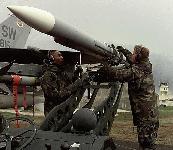
An indicator is on the wiring harness cover showing the condition of the TIVS, either "ENABLE" or "DISABLE". Only TIVS
equipped missiles are deployed aboard Aircraft Carriers (CV/CVN). The WPU-6/B Propulsion Section (with TIVS) meets the
fast cook-off and sympathetic detonation requirements of the IM program and the policy delineated in OPNAV Instruction
(OPNAVINST) 8010.13B. The other requirements (bullet impact, fragment impact, and slow cook-off) have not been met with
the current configuration. However, the WPU-6/B has been granted the appropriate waivers for shipboard use.
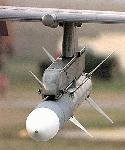
Wing and Fin Assemblies...
Wing and fin assemblies provide for flight control of the missile. The four wings are detachable, stationary flight
surfaces with ball fasteners to facilitate quick installation and removal. The four fins provide the movable control
surfaces. The AIM-120C has "clipped" wings and fins which are not interchangeable with AIM-120A and AIM-120B missiles.
The AIM-120C utilizes "clipped" wings and fins in order to meet the internal carriage requirements of the F-22.
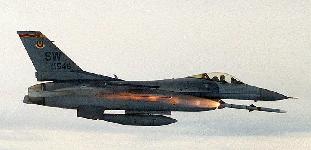
Launchers...
The AMRAAM system includes three new Missile Rail Launchers (MRLs): the LAU-127A/A, in conjunction with the LAU-115, used
on the F/A-18C/D aircraft; the LAU-128A/A, and the LAU-129A/A, used on the F-15 and F-16 aircraft, respectively. Additional
interface cables are not required between the aircraft and the launcher. The MRL can be installed and operated at all
current AIM-9 Sidewinder positions on all candidate aircraft, except F/A-18C/D wing tip stations; and is also capable
of launching AIM-9 Sidewinder missiles. The MRL supplements the Sidewinder launchers (except F/A-18C/D wing tip) on
AMRAAM capable aircraft. Power for Built-In-Test (BIT) of the pre-launch dormant missile is provided by converting
aircraft power in the AMRAAM Electronic Control Unit. The filter rectifier assembly is mounted at the forward end of
the missile propulsion section and provides the conversion of aircraft power required by the missile. Prior to launch,
signal and data transfer between missile and aircraft is accomplished through a buffer connector that is in-line between
the launcher cable and the missile umbilical connector. Similarly, the CFMRE interfaces with AMRAAM using the buffer
connector and the missile umbilical connector, and supplies the power in lieu of the aircraft for off-aircraft BIT and
reprogramming operations.
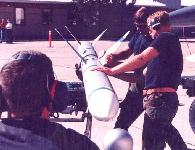
Organizational-level maintenance units receive AMRAAM as an AUR, four per container. Organizational-level maintenance is
performed by Work Center 230 USN Aviation Ordnanceman (AO) with Navy Enlisted Classification (NEC) codes 8342 and 8842,
and USMC personnel with Military Occupational Specialty (MOS) 6531. The AN/AWM-54 Aircraft Firing Circuit Test Set is
used to test for stray voltage in aircraft weapons circuits prior to loading ordnance. The AN/AWM-96 Aircraft Weapons
Control Test Set is used primarily by Aviation Electronics Technicians (ATs) to test the functionality of the aircraft
weapons circuit prior to loading AMRAAM, but is also used by AOs in squadrons employing the Integrated Weapons Team
concept. On-aircraft testing is accomplished using the BIT capability of the missile. AMRAAM Pre-Planned Product
Improvement (P3I) missile deliveries are anticipated to begin in FY 00 and continue through FY 12. Under the PrePlanned
Product Improvement approach, Phase 2 will incorporate a larger rocket motor, an improved warhead, a quadrant target
detection device, an improved electronic safe/arm device and continuously refine the ability to counter threats through
Operational Flight Program through the software. Major advantages include : A larger rocket motor that will give the
missile increased Pk with faster average terminal velocity and better end game capability against maneuvering threats.
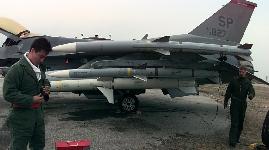
An improved warhead that will give the missile an improved ability to kill the target. A quadrant target detection device
that will improve the warheads chance of destroying the target. Software OFPís will improve the ability of the missile to
detect, track and guide on the target. The 1997 Omnibus bills took $15M from the 3600 funding thereby delaying critical
improvements in ECCM. The improvement in the rocket motor is in jeopardy of sliding right by one year. An OSD directive
to upgrade air-to-air-ranges (NGTCS) Next Generation Target Control is forcing a $20M AMRAAM budget disconnect requiring
the program redesign of the telemetry unit device for testing. AMRAAM is not currently funded for this activity. Under
the Pre-Planned Product Improvement (P3I) approach, Phase 3 is designed to update the guidance control (seeker). Included
with the new seeker, the software will also be continuously updated through Operational Flight Programs (OFPís). Major
advantages include : Improved missile guidance and Electronic Counter Counter Measures (ECCM) capability.
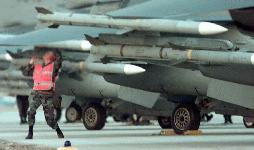
Ability to detect, track, and guide to future targets through additional signal pathís, control functions, and processing
capability. Will provide near term improved capability and long term flexibility for threat expansion. Will address further
guidance control functions to counter current and future threats. The 1997 Omnibus bills removed $15M from 3600 funding.
This impacted the Phase 2 schedule which in turn delayed the Phase 3 work by one year. Without Phase 3, the AMRAAM will
not be able to counter future threat aircraft or Electronic Counter Measures employed by the threat. Phase 3 propulsion
is currently unfunded by both USAF and USN. The 1995 AMRAAM COEA stated the +11 inches rocket motor was the best
alternative at the time. Technology has continued to investigate propulsion alternatives. There are currently four
different propulsion alternatives being evaluated. The Future Medium Range Air-to-Air Missile (FMRAAM) being investigated
by the United Kingdom is also an alternative to AMRAAM propulsion upgrade.
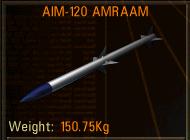
We have only 1 variant at the game...






















